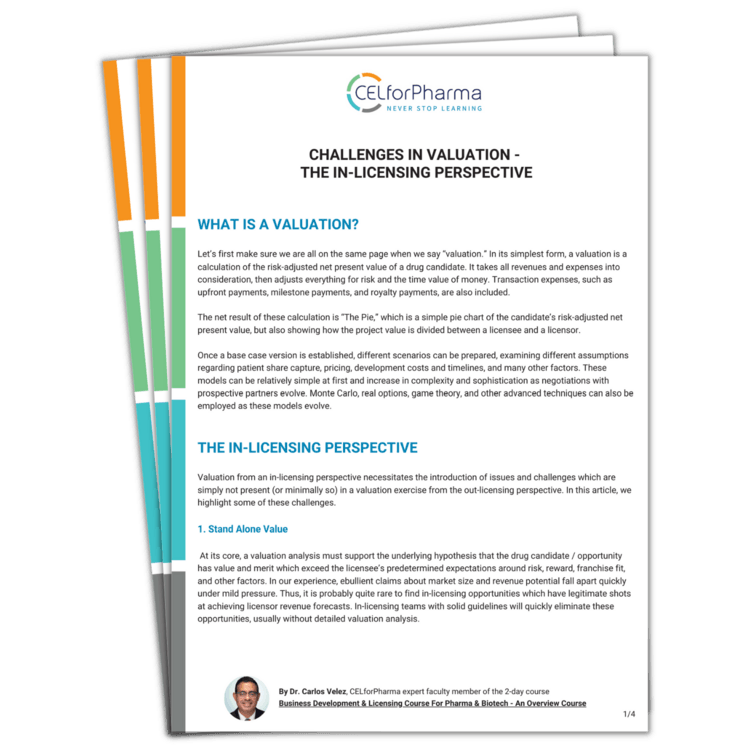At its core, valuations calculate the risk-adjusted net present value (rNPV) of a drug candidate, factoring in potential revenues, expenses, risks, and the time value of money. Compared to valuation from an out-licensing perspective, valuation from an in-licensing perspective is far more complicated. There are many more strategic, infrastructure, and parallel investment opportunities that must be considered.
In this guide, Dr Carlos Velez, expert-trainer of the Business Development & Licensing Course For Pharma & Biotech, highlights the unique challenges of valuation from an in-licensing perspective:
Download the 4-page article below ↓
1. 💲 Standalone value of a candidate:
It is uncommon to find in-licensing opportunities that realistically align with licensor revenue forecasts and that meet the licensee’s expectations around risk, reward and strategic fit.
2. ⚖️ Development and regulatory risks:
Approximately 10-20% of FDA submissions result in Complete Response Letters (CRLs), signaling non-approval. Common reasons include insufficient clinical data and manufacturing issues. Underestimating these risks during valuation can lead to flawed decisions and significant post-transaction setbacks.
3. 🔁 Franchise synergy:
Franchise synergy evaluates how well an opportunity aligns with an existing or emerging franchise. This requires complex analyses of infrastructure investments, ROI, and opportunity cost. Misjudging franchise fit can diminish the strategic value of in-licensed candidates.
4. ⚙️ Complex decision-making:
Companies often face tough decisions between pursuing in-licensing opportunities, investing in internal R&D programs, or even acquiring entire companies. Each option demands a distinct valuation framework, complicating direct comparisons and increasing decision complexity.
5. 🆚 Competition:
Competitors’ actions can have a direct impact on the valuation of in-licensing opportunities. For example, a competitor achieving successful Phase III results may affect your candidate’s market potential, jeopardising First-to-Market status or pricing leverage. Competitor analysis and scenario modeling are essential to account for these dynamics.
6. 🕒 Timing:
Valuation is not static: market conditions, competitor moves, and internal priorities can change overnight. A decision made today may appear less favourable tomorrow due to new data or shifting strategic objectives. This underscores the need for agility and the courage to make decisions amidst uncertainty.
📥 Download the 4-page article:

